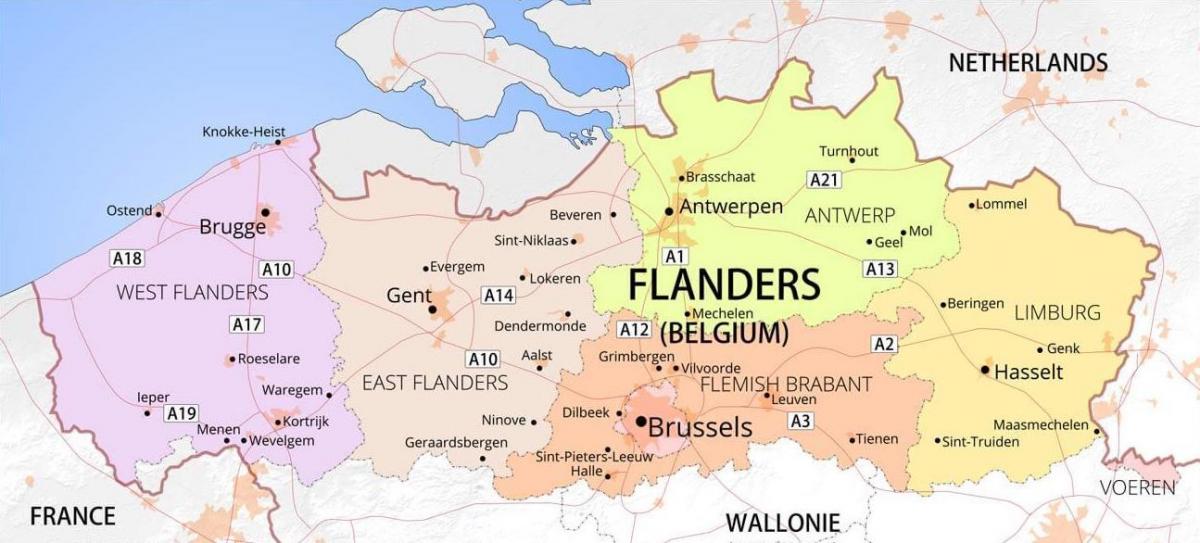search
Map of flanders Belgium
Map flanders Belgium. Map of flanders Belgium (Western Europe - Europe) to print. Map of flanders Belgium (Western Europe - Europe) to download. Flanders (Dutch: About this sound Vlaanderen ) is the (political) community of the Flemings, one of the communities of Belgium, and also a geographical region located in parts of present-day Belgium, France and the Netherlands as its shown in the map of flanders Belgium. "Flanders" can also refer to the northern part of Belgium that contains Brussels, Bruges, Ghent and Antwerp. Over the course of history, the geographical territory that was called "Flanders" has varied. In the second half of the twentieth century, there has been a gradual shift of political and economic power from French-speaking Wallonia (which was industrialized earlier) to the Flemish.
Flanders was one of the first continental European areas to undergo the Industrial Revolution, in the 19th century. Initially, the modernization relied heavily on food processing and textile. However, by the 1840s the textile industry of Flanders was in severe crisis and there was famine in Flanders (1846–50) as its mentioned in the map of flanders Belgium. After World War II, Antwerp and Ghent experienced a fast expansion of the chemical and petroleum industries. Flanders also attracted a large majority of foreign investments in Belgium, among others thanks to its well-educated and industrious labour force. The 1973 and 1979 oil crises sent the economy into a recession.
In feudal times, Flanders formed a county, the County of Flanders, which extended over the present day: Belgian provinces of West Flanders and East Flanders, French regions French Flanders in the départment Nord-Pas de Calais and extending into neighbouring départments, Dutch region Zeelandic Flanders (Zeeuws-Vlaanderen) in the province of Zeeland as its shown in the map of flanders Belgium. Related to these geographical or political uses of the noun 'Flanders', and the adjective 'Flemish', they may also be used to describe several other distinct (but inter-connected) cultural, geographical, historical, linguistic or political items or entities.


